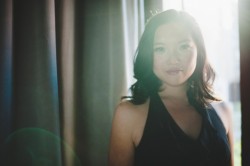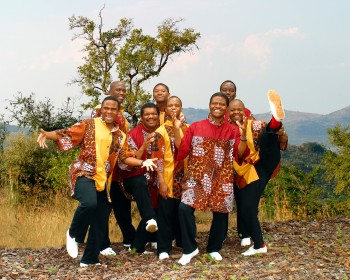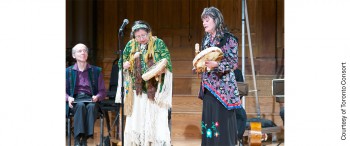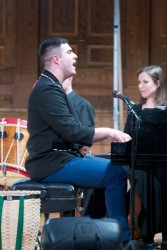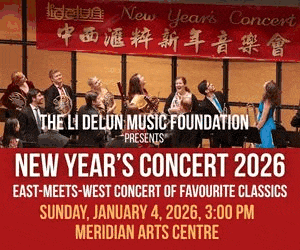Concert Report: Pocket Concerts, Up Close and Personal
![]()
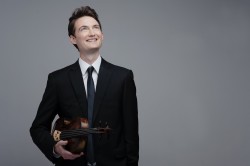 The audience finds the experience invigorating. Violist Rory McLeod, co-director of Pocket Concerts, finds that when people experience music in the intense environment and intimacy of a private home they feel a deeper connection not only to the music but also to the musicians and fellow audience members.
The audience finds the experience invigorating. Violist Rory McLeod, co-director of Pocket Concerts, finds that when people experience music in the intense environment and intimacy of a private home they feel a deeper connection not only to the music but also to the musicians and fellow audience members.
Sunday afternoon, February 26, found me in a downtown condo along with 30 others packed cozily into a sun-soaked living room in the shadow of St. James Cathedral. What better place to hear Dmitry Sitkovetsky’s string trio arrangement of Bach’s Goldberg Variations. “When I first wrote my transcription of Bach’s Goldberg Variations for String Trio, in 1984, it was both a labour of love and an obsession with the 1981 Glenn Gould recording,” the Soviet-born violinist and arranger wrote. “For two months I probably had the time of my life, musically speaking, being in the constant company of Johann Sebastian Bach and Glenn Gould.” And if there is one piece of classical music that has served as a signpost for Canadians in the last six decades, it is the Goldberg Variations.
TSO violinist Carol Fujino along with violist McLeod and cellist Bryan Holt (freelance musicians fresh from a Götterdämmerung gig as part of the COC Orchestra the night before) have been working on the Bach since last November; Sunday’s concert marked their third public performance of it.
McLeod’s domestic partner and Pocket Concerts’ co-director pianist Emily Rho introduced the trio with a refreshing informality. She pointed out that our convivial host, who had welcomed us so warmly to his home, was also an amateur cellist who studied with Holt. McLeod said a few words about Sitkovetsky and the music, paying particular attention to an explanation of the nine canons (and one quodlibet) that were a feature of every third variation. Then Rho led us in a brief breathing exercise to focus our attention, asking us to open our eyes the moment we heard the first notes of the famous Aria that begins and ends the Variations.
The intensity of those first notes was palpable as sound filled the physical space, the playing lively, the bright acoustic amplifying the energy. The trio arrangement, replete with ingenuity, seemed to make the music more transparent. The different timbres of the three instruments helped reveal the depth of character inherent in the music and brought clarity to the polyphonic lines, illuminating intricacies that only the best keyboard players are capable of unearthing.
The informality of the setting allowed McLeod to point out the first two canons just before they were to be played and to comment on how fortunate we all were that the ringing of the cathedral bells began during a brief pause between variations. And after the trio needed to start Variation 13 over again, McLeod simply said, “it’s okay, we’re among friends.”
Pocket Concerts’ format is able to break down the perceived barriers between musicians and their audience; the post-concert reception is an important part of that process. It’s an opportunity for the audience and the musicians to get to know each other, talk about the music or other things. McLeod told me that what he finds most gratifying about his Pocket Concerts experience is bringing music to people unfamiliar with classical music. McLeod and Rho met nine years ago in Sonata Class at the Glenn Gould School. They’re both alumni of Toronto Summer Music (she twice, he thrice). Sunday’s concert was the 48th Pocket Concert (of which 18 have been private) since the first one in August of 2013. The next, on March 25 and back by popular demand, features violinist Csaba Koczó with Rho on piano, performing Beethoven’s immortal Sonata No. 9, Op. 47 "Kreutzer" and Brahms’ Sonata No. 3 in D Minor, Op. 108.
Take advantage of the chance to experience music like you’ve never done before.
Paul Ennis is the managing editor of The WholeNote.

